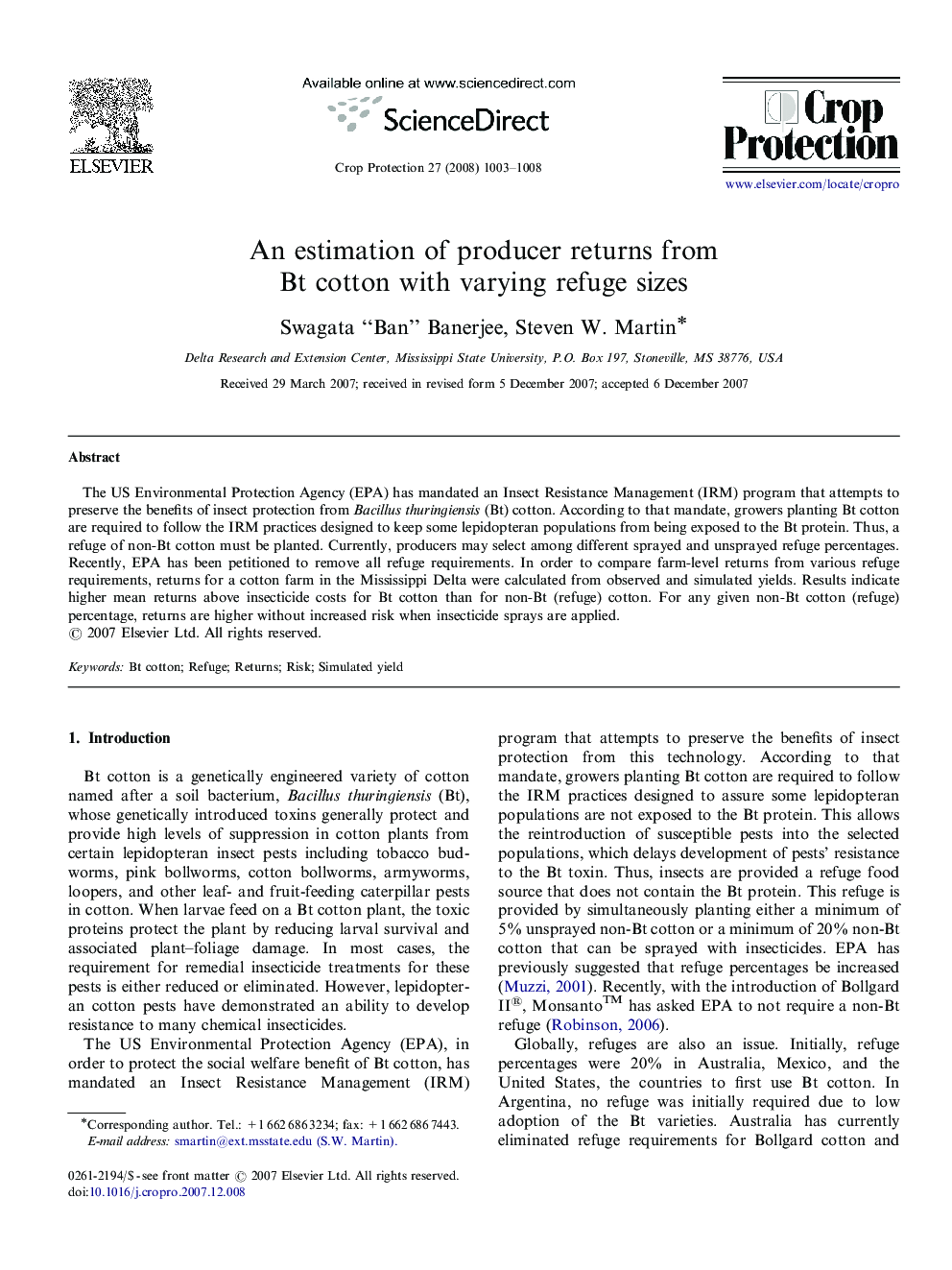| Article ID | Journal | Published Year | Pages | File Type |
|---|---|---|---|---|
| 4507646 | Crop Protection | 2008 | 6 Pages |
Abstract
The US Environmental Protection Agency (EPA) has mandated an Insect Resistance Management (IRM) program that attempts to preserve the benefits of insect protection from Bacillus thuringiensis (Bt) cotton. According to that mandate, growers planting Bt cotton are required to follow the IRM practices designed to keep some lepidopteran populations from being exposed to the Bt protein. Thus, a refuge of non-Bt cotton must be planted. Currently, producers may select among different sprayed and unsprayed refuge percentages. Recently, EPA has been petitioned to remove all refuge requirements. In order to compare farm-level returns from various refuge requirements, returns for a cotton farm in the Mississippi Delta were calculated from observed and simulated yields. Results indicate higher mean returns above insecticide costs for Bt cotton than for non-Bt (refuge) cotton. For any given non-Bt cotton (refuge) percentage, returns are higher without increased risk when insecticide sprays are applied.
Related Topics
Life Sciences
Agricultural and Biological Sciences
Agronomy and Crop Science
Authors
Swagata “Ban” Banerjee, Steven W. Martin,
